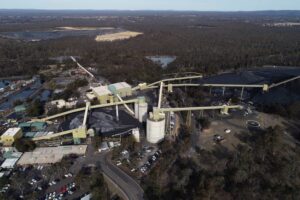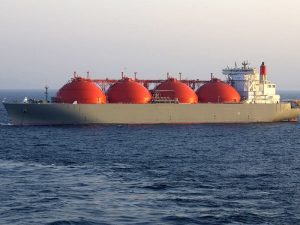Australian tech billionaire Mike Cannon-Brookes will partner with the Clean Energy Finance Corporation (CEFC) to make a cornerstone investment in a new venture capital fund focused on improving the sustainability of Australia’s agricultural sector.
The investment fund of Mike and Annie Cannon-Brookes, Grok Ventures, has partnered with the CEFC to make an $8 million cornerstone investment into the Tenacious Ventures fund, Australia’s first venture capital firm dedicated to sustainable innovations in the agrifood sector.
Tenacious Ventures will seek opportunities to invest in up to 20 early-stage tech start-ups in the agricultural and food supply chains and will manage a total of $30 million in funds to serve as venture capital for agricultural businesses that can reduce their emissions and increase climate resilience.
“Australian agriculture is a major exporter of food and fibre, feeding more than 60 million people per year. We are experts at efficient, climate adaptive food production – Australian farmers reduced the greenhouse gas emissions intensity of agriculture by 63 per cent between 1996 and 2016,” Tenacious Ventures co-founder Matthew Pryor said.
“But more needs to be done to develop and export agricultural technology that improves the efficiency of production on a global scale.”
Cannon-Brookes, who has been a strong advocate for investments in clean energy technologies, following his successful role in founding Australian tech giant Atlassian, established Grok Ventures with his partner Annie, and it manages investments in ventures that include autonomous vehicle company Zoox, tech-focused superannuation provider Spaceship and Australian graphic design platform Canva.
“Innovation in agriculture is desperately needed across the world to make our planet more sustainable. It’s fantastic to see the CEFC investing in agrifood tech through this commitment to Tenacious Ventures. Kick-starting this industry in Australia will take guts and expertise, and the CEFC brings both,” Cannon-Brookes said.
“There’s no doubt that new ideas in agriculture will play a massive role in reducing carbon emissions, while also delivering return on investment. The economic upside for Australia’s economy is also huge.”
In announcing the creation of a dedicated Agrifood venture capital fund in Australia, Tenacious Ventures noted the huge investment potential in a sector that Australia is currently missing out on. Up to US$16 billion has been invested in agrifood tech businesses in the last three years, but Tenacious Ventures would be the first dedicated venture capital fund to be established in Australia.
The CEFC, which as a mandate to invest in clean energy and sustainable development projects, sees the investment as a way to improve the sustainability of the agricultural sector, as well as to help the sector to respond to the emerging threats of climate change.
The CEFC’s investment in the Tenacious Ventures Fund will be made by the agency’s Clean Energy Innovation Fund, which will allocate up to $200 million in investments in early-stage clean energy technologies, in collaboration with the Australian Renewable Energy Agency.
“The agricultural sector poses a demanding climate change challenge: how to produce more food, more efficiently, for a growing population amid a more extreme climate, while also reducing greenhouse gas intensity and emissions,” CEFC CEO Ian Learmonth said.
“As a major food exporter, Australia has an opportunity to be at the forefront of innovative technology solutions than can address these challenges.”
“With this investment, the CEFC is supporting an exciting Australian industry of the future with the potential to make a meaningful contribution to lowering global emissions while supporting our agriculture sector,” Learmonth added.
Around 12-13 per cent of Australia’s greenhouse gas emissions are produced by the agricultural sector, driven primarily by the raising of sheep and cattle. Globally, particularly when the full supply chain for agricultural products is taken into account, up to 30 per cent of global emissions can be attributed to food production.
Emissions from the global agricultural industry are anticipated to grow into the future, with the global population expected to reach 10 billion by 2050, placing greater pressure on a sector that is already feeling the impacts of climate change.
The CEFC has previously supported food producers to reduce the emissions footprint of their operations and to support agricultural businesses to incorporate renewable energy technologies into their operations. This included an investment in the $200 million Sundrop farms project, which integrated solar thermal technologies to supply heat and energy to greenhouses in Port Augusta, for the efficient production of tomato crops.
As RenewEconomy reported in May, the Sundrop farms solar thermal technology business was sold to New Zealand-based infrastructure group Morrison & Co., that as also received investment backing from the CEFC.










